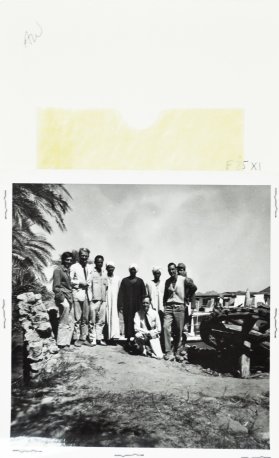Yale and UNESCO: Photo of W.K. Simpson and team excavating at Arminna West
Overview
Yale and UNESCO: Photo of W.K. Simpson and team excavating at Arminna West [ edit ]
Yale and UNESCO
In 1960, Yale University became part of the Nubian Salvage Campaign, an effort to save the ancient sites that would be flooded by the building of the Aswan High Dam.
In 1954, Egypt resolved to build the Aswan High Dam in order to regulate Nile floods, generate hydroelectric power, and increase agricultural land. The resulting lake threatened archaeological sites over 1,550 square miles. Egypt joined with the United Nations Educational, Scientific and Cultural Organization (UNESCO) in order to begin the largest international archaeological salvage campaign in history. In 1960 Yale University, together with the University of Pennsylvania, began work as part of the salvage expedition, and in the first season found the tomb of a Nubian Chief and Egyptian governor named Hekanefer (whose Shawabti is also displayed in this section). During later seasons the expedition identified and excavated a Meroitic cemetery and Christian church. As part of the UNESCO agreement participating universities were given half of the excavated finds, leaving Yale a tremendous collection of artifacts.
In 1962 the Yale Peabody Museum organized the world’s first ever exhibit of Tutankhamun’s treasures. In order to raise money for the building of the Dam, the Egyptian government, W.K. Simpson of Yale, and Dillon Ripley of the Yale Peabody Museum, organized the first ever travelling exhibit of Tutankhamun’s treasures. The Yale Peabody Museum displayed the exhibit throughout February 1962. The exhibit was a smash, shattering all previous attendance records for the museum by hosting 24,000 people in just four weeks! This article from the New Haven Register discusses the exhibition and the role of Yale in the UNESCO salvage campaign.
Date
1961
Museum
Yale Peabody Museum of Natural History, W.K. Simpson Archive



